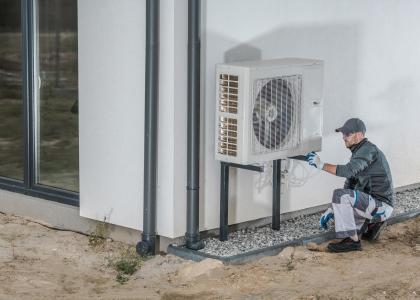In a new three-part video series, ACEEE explores how energy efficiency can improve people’s health. We hear the stories of homeowners in three states. Our first part explored efficiency’s impact in rural West Virginia, and our second part looked at the impact in the city of Baltimore, MD. Part Three takes us to Pittsburgh, PA.
Pollution from dirty power plants and steel mills is part of Pittsburgh’s history. Will Allen, founder of the Will Allen Foundation and former Pittsburgh Steelers player, remembers what the city was like in the 1970s. “You couldn’t walk down the streets during the day because of the soot and the waste from the coal plants and the steel mills,” he said, adding, “When you wore a white shirt, you had to change your shirt,” earning Pittsburgh the nickname “two-shirt city.”
Despite progress, city residents still experience poor air quality.
“Many Pittsburghers felt we had kind of conquered air quality because we rid ourselves of our smoky past,” said Laura Nettleton, sustainable design architect at Thoughtful Balance. Yet, she said, the city has some of the worst air quality in the country today. “So while it’s not dark and smoky the way it used to be, it still has an impact on our health.” In a recent American Lung Association study, Pittsburgh ranked among the dirtiest US cities for pollution that triggers serious problems with the lungs and heart.
Energy efficiency is helping to improve Pittsburghers’ lives, both inside and outside the home.
Reducing energy waste lessens the need to burn fossil fuels to generate electricity. Those cuts deliver big gains in health, because pollutants from burning fossil fuels contribute to four of the leading causes of death in the United States: cancer, chronic lower respiratory diseases, heart disease, and stroke.
Energy efficiency also improves air quality indoors, making people healthier and more comfortable inside their homes. Efficiency improvements can remove health risks such as carbon monoxide from backdrafting appliances and eliminate exposure to extreme temperatures. Cathy Guilli and her family experienced these benefits firsthand after participating in a local weatherization program. She suffers from fibromyalgia, a chronic pain disorder intensified by cold temperatures and temperature swings. After the program replaced the family’s 37-year-old furnace, Cathy noticed a change: “Having the new furnace on and having heat everywhere was just so much different this year. And I just felt so much better.” After installing a dehumidifier in her daughter’s room, Cathy said, “it seemed that she wasn’t sick continuously like she was before.” The weatherization program kept the home warm in the winter, eliminated its cold drafts, and improved its indoor air quality.
By continuing to advance energy efficiency, Will Allen said, Pittsburgh can improve the lives and health of residents. “A city like Pittsburgh has all the pieces to be a great example at the national level.”
ACEEE’s video series is part of its new Health and Environment program, launched last year to explore the linkages among health, environment, and energy efficiency by conducting original research and educating policymakers. To showcase this research and promote the work of prominent experts in this growing field, ACEEE will host the first-ever Conference on Health, Environment & Energy in New Orleans in December 2018. And stay tuned for a series of forthcoming ACEEE reports that will further explore the health and environmental benefits of saving energy. In March, our Mission Attainment: Incorporating Pollution Reductions from Energy Efficiency in State Implementation Plans report will highlight areas across Pennsylvania and other states where reducing energy waste can help reduce harmful pollutants and meet federal air quality regulations, helping Pittsburghers and residents across the state to breathe easier.


